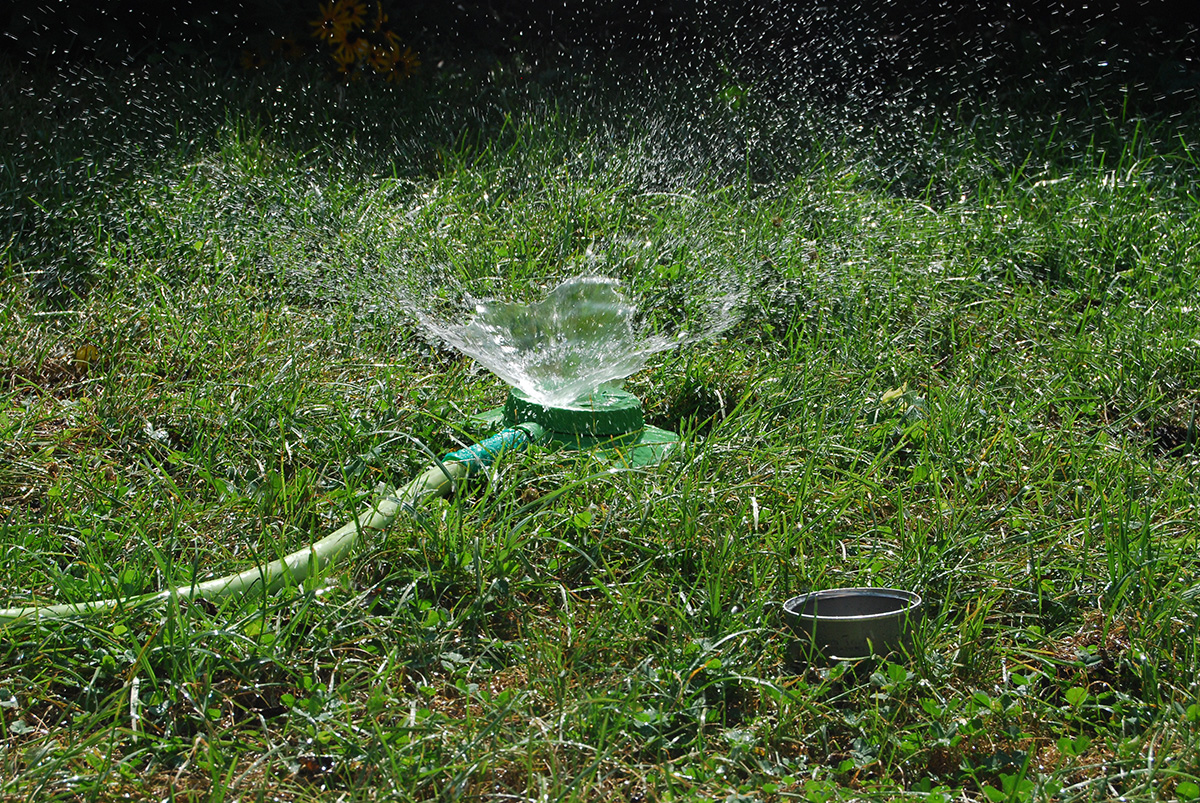Reduce the Need for Watering

Rain barrels capture rainwater before it can run off into storm sewers, conserving water and preventing pollution when used to water thirsty plants. | Photo Credit: Shutterstock
By choosing drought tolerant plants for your landscape, you will have to water less frequently.
One option to consider is going native. Once established, a number of native plant species require little if any watering. A good example is purple coneflower. You can also reduce watering frequency and the amount of water you would otherwise use by grouping plants in your landscape based on watering needs. By using this approach, you can reduce watering needs to only a few flower beds, if you so choose.
Going Dormant
Most people think that a lack of water will damage the lawn, when actually overwatering may cause more damage! Letting your well-established lawn go dormant in the heat of summer or other dry periods is another strategy to consider. Turf grass will naturally go dormant as part of a survival mechanism during prolonged dry conditions. Your lawn can survive in this state for about four weeks without substantial thinning once it recovers. However, you will want to consider a thorough watering about once every four to five weeks. Try and avoid foot or lawnmower traffic when your lawn is dormant. Your lawn will green up again after a soaking rain. Learn more in Manage your Lawn during Drought.
Watering Frequency & Amount
If you chose to water your lawn, using a regular schedule probably isn’t the way to go. This can lead to overwatering, which can leach vital nutrients away from the root zone and promote disease. Additionally, brief daily watering discourages deep root growth that is essential for healthy turf grass. Instead, water your lawn based upon its appearance. Lawns that appear bluish-green or where footprints remain after walking across them could use watering. Watering more frequently has no benefit. If you have an automatic sprinkler system, you should set it for a single cycle then turn it off until the lawn needs watering again. When the lawn does require water, it’s best to do a deep soaking (1 – 1 1/2 inches) in the morning between 5am-9am to encourage deep root growth for a more drought tolerant lawn. Avoid watering in the evening to reduce chances of fungal infection. You can easily measure the amount of water applied with a rain gauge or even a tuna can.

A tuna can is useful for measuring how much water you add to your lawn. | Photo credit: Janice Milanovich, Illinois-Indiana Sea Grant
Irrigation Systems
A variety of high efficiency irrigation systems are readily available to the public. Even a ‘do-it-yourselfer’ can find many options at a home center, ranging from drip irrigation to misters. These systems allow the property owner to have greater control over the volume of water applied and the timing. Inspect your irrigation system annually to make sure it is functioning properly or fix issues such as leaks or broken sprinkler heads.








